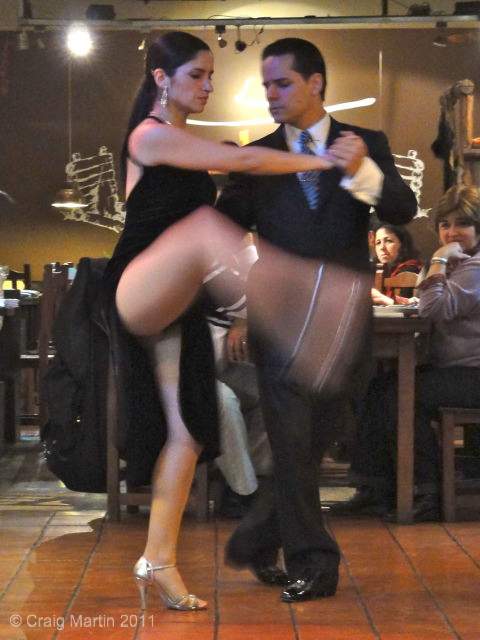Possibly the most European of all South American cities, Buenos Aires has a latin energy that makes it unique. There are green spaces, interesting cafés, incredible architecture, and of course the tango culture – though perhaps this isn’t as visible now as it was in the past.
Culture
Tango developed in post-war Argentina and Uruguay, but these days Buenos Aires is regarded as its home. There’s an amazing concentration of tango clubs throughout the city, many of them open to visits from tourists, and many restaurants in the microcentro (central city) feature live tango music and dancing as you eat. There are constantly-running tango shows on Caminito in La Boca — not overly authentic, but it’s a way to get a taste of the dance if you don’t want to go out of your way.
Buenos Aires has a great selection of clubs for the dancers, as well as boliches: small pubs that feature milonga or tango singers through the night. What often puzzles visitors is that they can’t find them! It’s easy though: just don’t leave your accommodation until at least midnight, as many nightclubs don’t open their doors until two or three in the morning.
Books feature heavily in Buenos Aires’s cultural life: from the cheap bookstores lining Avenida Corrientes to the fantastic Ateneo on Avenida Callao. Make sure you spend some time browsing and pick up the works of some of Argentina’s most-famous novelists: Jorge Luis Borges, Ernesto Sabato and Alejandra Pizarnik amongst them. You’ll find a lot of titles covering recent history and current politics, which illustrates the amount of interest Argentina’s readers give to these issues.
Geographic overview
 Buenos Aires is located on the Rio de la Plata. Most of the transport hubs are located on or near the river, and the city is laid out on a rough grid stretching away from the river. The city centre is centred around where Avenida 9 de Julio (which runs up from the river) crosses Avenida Corrientes, and that’s where the Obelisk is located. The other principal street, Avenida 25 de Mayo, runs parallel with Av. Corrientes.
Buenos Aires is located on the Rio de la Plata. Most of the transport hubs are located on or near the river, and the city is laid out on a rough grid stretching away from the river. The city centre is centred around where Avenida 9 de Julio (which runs up from the river) crosses Avenida Corrientes, and that’s where the Obelisk is located. The other principal street, Avenida 25 de Mayo, runs parallel with Av. Corrientes.
Buenos Aires is divided into 48 barrios (neighbourhoods) but most are residential – posh Recoleta is in the north near the bus station, and edgy La Boca is in the south near the river.
In the city grid, the blocks are numbered by the hundreds, so each street you cross will take the numbers up 100, even though there aren’t that many buildings in each block. This makes finding an address really easy, and helps when giving addresses to taxis. See getting around Buenos Aires for more information.
Climate
Winters are cold but reasonably dry, averaging lows of around 8-10 degrees and highs approaching 15°C. During summer, the rainfall actually increases, but temperatures also rise with lows around 20°C and average highs touching 30°C. March tends to see the most rain, so that might just be the month to avoid.
